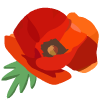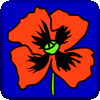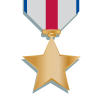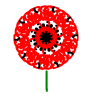Remembrance Day
Nov. 8, 2024
Remembrance Day or Armistice Day is held on the 11th of November and marks the day that World War I ended at 11 am on the 11th day, of the 11th month in 1918. A two-minute silence is held to remember the courage and bravery of those who fought and died in all wars, such as WWI, WWII, The Falklands, and The Gulf War, as well as the conflicts in Afghanistan and Iraq. Ceremonies are held at the Cenotaph in London as well as at War memorials and churches across the U.K. and overseas in commemoration of these wars.
King George V held the first two-minute silence on 11th November 1919 and made the request for the silence to be observed so that: “thoughts of everyone may be concentrated on reverent remembrance of the glorious dead”.
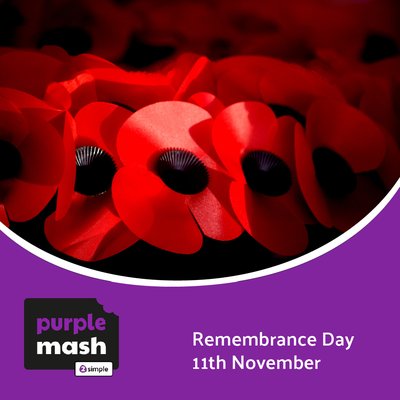
Remembrance is a prescient time for bringing people of all ages and backgrounds together to reflect upon the service and sacrifice of the Armed Forces, and to join together in the hope for a brighter, peaceful future.
Royal British Legion
Join the Live Remembrance Assembly
This year the The Royal British Legion have partnered with the National Literacy Trust to organise a live, interactive assembly for KS2 children across the country, exploring the theme of Service. The event will be held on Monday 11th November and will feature music, film, art, interviews and more, culminating in the Two Minute Silence at 11am. You can register for the live assembly here. On this page, there is also a link to watch last year's Remembrance Live Assembly.
The Royal British Legion also offer a wide range of free resources to support the teaching of Remembrance by schools and families, covering all the Key Stages. The resources are linked to the National Curriculum and include lesson plans, bite-sized activities and assemblies. Explore their resources here.
Purple Mash resources
We have put together a folder of classroom resources within Purple Mash that primary schools can use in the run up to Remembrance Day. These include a range of writing and paint projects.
Writing Projects
Children could either write an information text, or design a poster to explain what happens on Remembrance Day. Many veterans and heroes wear their medals on Remembrance Day, while family members can also wear their relative’s medals to remember acts of bravery. Children could design a medal for Remembrance Day as well as talking to family members about Remembrance and documenting their own stories.
Writing a letter to a person remembered on the day would help children describe their thoughts about the sacrifices made. Remembrance Day is of course a global event and is marked in different ways across the world. Using this exercise, children can write about how other countries commemorate those who have died in conflict.
Paint Projects
Using our paint projects children could draw a Poppy symbol for Remembrance Day and use our Poppy pattern tool from 2Paint a Picture to design a field of poppies pattern.
All of these activities are available to Purple Mash subscribers. If you don’t have a licence, you can experience everything that Purple Mash has to offer with a 14-day free trial. Register your free trial here.
More resources
Pupils could also use 2Publish Plus to research and write about the impact of the wars on their local community, including writing about their local war memorial. Or use 2Animate to produce an animation for Remembrance, combining poetry and graphics.
The BBC Teach website has a collection of teaching resources about Remembrance and the history of World War One and War Word Two for use with both primary and secondary school classes.
‘They shall grow not old, as we that are left grow old: Age shall not weary them, nor the years condemn. At the going down of the sun and in the morning, we will remember them.’
For the Fallen
Laurence Binyon

